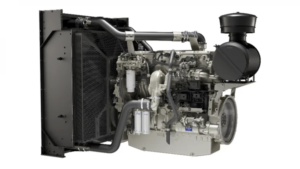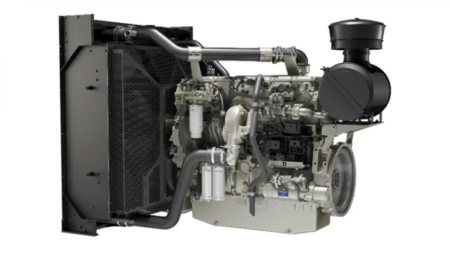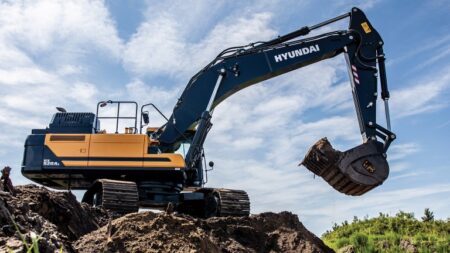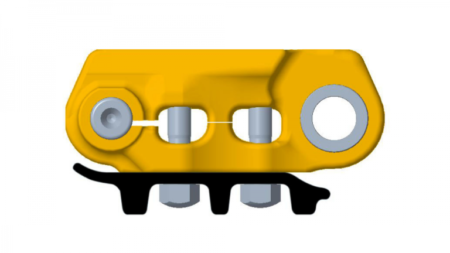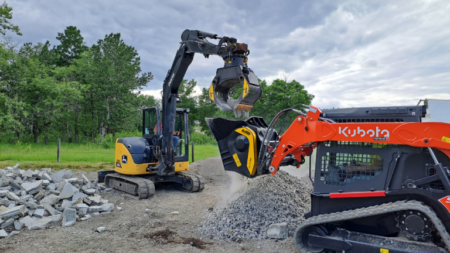
Shutterstock photo
The DOT wants public agencies and private-sector stakeholders to take action on 12 specific interoperable V2X deployments, all by 2036.
The vehicle-to-everything (V2X) concept, on the DOT’s drawing board for approximately 30 years, is being touted as a cutting-edge mechanism for U.S. highway safety and efficiency.
The technology enables vehicles to communicate with each other as well as pedestrians, cyclists and roadside infrastructure. It’s being compared with vintage technology still appreciated by truckers around the world.
In August, the DOT unveiled its National V2X Deployment Plan, which the agency said sets the launch vision, goals and milestones for the next 12 years.
“Excitement is building around V2X,” said Egan Smith, managing director of the Intelligent Transportation Systems (ITS) joint program office.
“As deployments become more widespread, we are going to see the safety benefits multiply,” he told DOT’s Public Highways magazine.
With the launch, DOT is calling on public agencies and private-sector stakeholders to take action on 12 specific interoperable deployments, all by 2036.
“Interoperability is the key,” Govind Vadakpat, the ITS JPO program manager of smart infrastructure told Public Highways. “Vehicles, devices and infrastructure all must … communicate … seamlessly across jurisdictional boundaries for V2X to reach its full potential.”
The FHWA has stepped up to advance interoperability. The agency is providing technical assistance and resources to V2X deployers, for one thing. It’s also working to resolve regulatory uncertainty, establishing a V2X peer group and identifying proven V2X applications.
Finally, FHWA is investing in research, development and deployment of V2X technology, according to the article.
More than 800 comments prove stakeholders support the draft deployment plan, many enthusiastic about its key features.
Singing Praises of Connectivity
Citizens Band radio technology, first popular in the 1950s, continues to be a vital communication tool in the trucking and heavy transport sector.
It is an early example of “a ubiquitous communication system that was, and is, used both by citizens at home and … in any type of vehicle or boat,” said hackaday.com. “For truckers in particular it provides a means to obtain constant updates on road conditions [and for] truck-to-truck communications should the need arise.”
Car drivers, who connect and inform via smartphone technology, still want access to a communication network for crucial information, said hackaday. Cruise control and collision avoidance systems (CAS) monitor activity around the vehicle as well as potential traffic rule violations.
“The number and types of CAS and other forms of advanced driver-assistance systems [ADAS] in modern cars keep increasing,” said the publication.
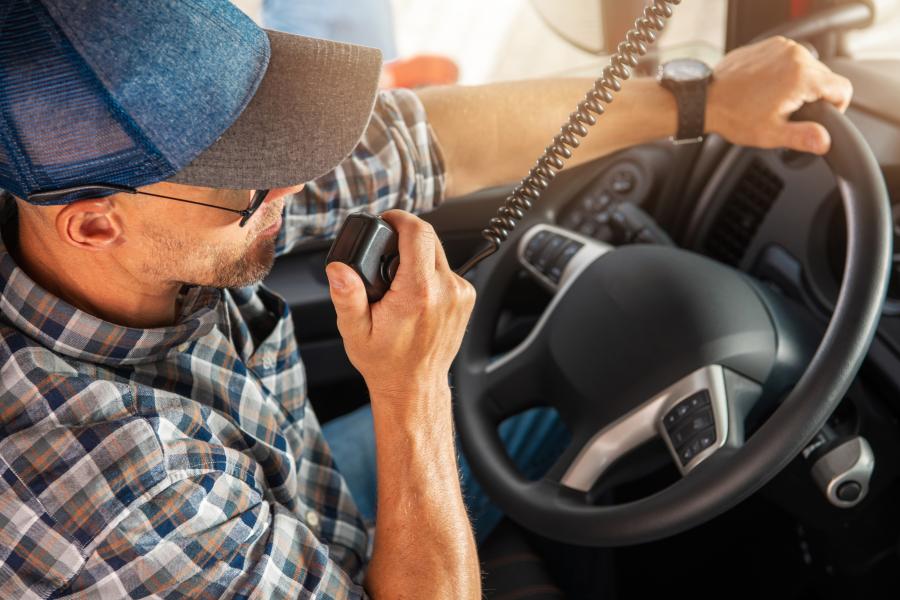
Adobe Stock photo
Everything “from LIDAR and cameras to radar systems” prevent collisions, keep the car in the current lane and detect braking cars ahead. These systems also integrate data obtained via a data link on upcoming traffic lights and other notable features long before they become visible.
“It raises the question of whether … V2X … would do more than standardize and expand upon much of the technology that is already out and about on the roads today,” said hackaday.com.
Titled Saving Lives with Connectivity, the deployment plan will guide DOT’s V2X implantation and the agency’s goal of zero highway fatalities. The plan was released in draft form about a year ago, detailing the technology that would enable vehicles and wireless devices to communicate.
“These technologies can enable a more safe, secure and efficient transportation system while maintaining privacy and consumer protection,” said DOT.
The agency also said that the technologies will contribute to the Safe System Approach adopted by the USDOT’s National Roadway Safety Strategy. The Safe System Approach is a comprehensive plan launched in January 2022 to address the crisis of roadway deaths.
The national plan “has the power to save lives and transform the way we travel,” said Pete Buttigieg, secretary of transportation. “The department recognizes the potential safety benefits of V2X, and this plan will move us closer to nationwide adoption of this technology.”
Robert C. Hampshire, principal deputy assistant for research, said the plan was drafted in collaboration with pubic and private partnerships.
“The plan will accelerate investment, research and deployment in V2X ‘market certainty,'” he said.
And, Shailen Bhatt, FHWA administrator, said the plan provides a framework for the acceleration of V2X deployment. Along with the deployment, FHWA announced nearly $60 million in grants to three entities to promote deployment.
The goal is to advance V2X communication, ensuring connected technologies communicate securely without interference across a variety of devices and platforms.
The launch represents a “significant milestone,” said Laura Chace, Intelligent Transportation Society of America (ITS) president and CEO.
“USDOT’s enthusiastic support for V2X adoption provides clear guidance to stakeholders for continued V2X development, investment and deployment.”
Grants Spur Deployment Models
In June, DOT awarded $60 million in grants in Arizona, Texas and Utah to advance connected and interoperable vehicle technologies. The awards are intended to serve as national models to accelerate and spur new deployments of V2X technologies.
Connected vehicle technology like V2X “has potential to make roads safer and save lives,” said U.S. Secretary of Transportation Pete Buttigieg in announcing the awards. “The grants we’re announcing today are helping accelerate the development and adoption of potentially life-saving V2X technology nationwide.”
“The funding … will help accelerate the technology so that we can deploy it on a national scale,” said Bhatt.
That in turn means the agency can “provide new tools to reduce deaths on our nation’s roads and highways,” he added.
In Arizona, the Maricopa County DOT will receive $19.6 million for largescale deployment of V2X technologies.
Arizona’s plan is to connect 750 physical and virtual roadside units to an estimated 400 vehicle onboard units targeting transit, emergency and freight fleets via emergency vehicle preemption, vulnerable road user (VRU) detection, transit signal priority and freight signal priority applications.
Those applications will be in Phoenix, Tolleson, Avondale and unincorporated Maricopa County, as well as along ADOT’s U.S. 60.
Texas A&M Transportation Institute will receive $19.2 million to deploy in Houston, College Station and corridors connecting the two cities.
The project serves to enhance safety, efficiency and overall mobility for VRU at signalized intersections and traffic-navigating emergency responders It also serves transit operators seeking efficient routes, workers operating within construction zones and everyday motorists.
The Utah DOT will receive $20 million toward deployment sites in Utah, Colorado and Wyoming. Each state represents a broad variety of population densities, demographics, jurisdictions, topography and transportation facilities.
All of Utah, I-80 through Wyoming, and major portions of Colorado including Denver, I-70 to the Utah border, and I-25 through Colorado are included.
The applications focus on safety, mobility and environment and support the ability to demonstrate measurable impact. They address critical needs including connected intersection, weather impact, curve speed warning, traveler information, VRU and other safety technologies.
How Smart Will Technology Be?
Wireless communication would transmit road and traffic conditions more directly and independent from signs near or on the road, reported hackaday.com.
The publication likened the technology to airplane transponders, saying it would give vehicles “awareness of where other traffic is hanging out.”
The V2X technology also would include communication regarding infrastructure (V2I), pedestrians (V2P) and vehicle-to-network (V2N).
“Is this the future of road traffic?” asked the article. “The DOT seems to think that its deployment will be a good thing” — except for tricky regulations.
“V2X has been stuck in regulatory hurdles,” noted the publication. “This may now change, with the DOT releasing a roadmap for its deployment.”
As ITS explains, V2X-enabled cars also would be able to communicate with V2X-enabled bicyclists and pedestrians with V2X-enabled devices on themselves or a bike.
“This would then communicate with the vehicle’s ADAS, ideally preventing collisions between the vehicle and these much squishier traffic participants,” said hackaday. “These personal V2X devices could be integrated into smartphones at some point, for example.”
ITS’ deployment plan envisions V2X-enabled cars with 5.9 GHz-enabled radios communicating with roadside units (RSU). An exchange of relevant information would build upon the knowledge gained so far from cellular-V2X (C-V2X) trials, according to hackaday.
“The RSU would be placed at intersections, where it could eliminate many crashes.”
This while also providing the driver with information on when a traffic light will turn green and prevent the running of red lights. While it sounds wonderful on paper, said hackaday, there’s the chance that spoofed V2X messages will affect traffic or cause casualties it seeks to avoid.
The ITS cybersecurity research program wants trusted communications between vehicles, infrastructure and other parties in a V2X-enabled system.
“This would seem to involve some secure way to signing messages while guaranteeing some level of anonymity,” noted hackaday.
To avoid collision, “you only need to know where the vehicle, bike or pedestrian in question is roughly located before any onboard sensors can detect it.”
“If V2X wants to succeed, it should be implemented and handled in a way that works with … biases, rather than against them,” said the article. “If lives are saved due to V2X-enabled cars …then those are convincing arguments.”
The publication maintains that implementing V2X might be easier than self-driving cars. That’s because it doesn’t change or replace anything more than do ADAS features in today’s cars.
“It might even be quite realistic to retrofit V2X into existing vehicles, significantly promoting kinetic hesitancy in close traffic situations,” said hackaday.com
But the publication takes a cautious approach to the concept of V2X standardization: “We will have to wait and see what happens.” CEG
Lucy Perry
Lucy Perry has 30 years of experience covering the U.S. construction industry. She has served as Editor of paving and lifting magazines, and has created content for many national and international construction trade publications. A native of Baton Rouge, Louisiana, she has a Journalism degree from Louisiana State University, and is an avid fan of all LSU sports. She resides in Kansas City, Missouri, with her husband, who has turned her into a major fan of the NFL Kansas City Chiefs. When she’s not chasing after Lucy, their dachshund, Lucy likes to create mixed-media art.
Read the full article here


